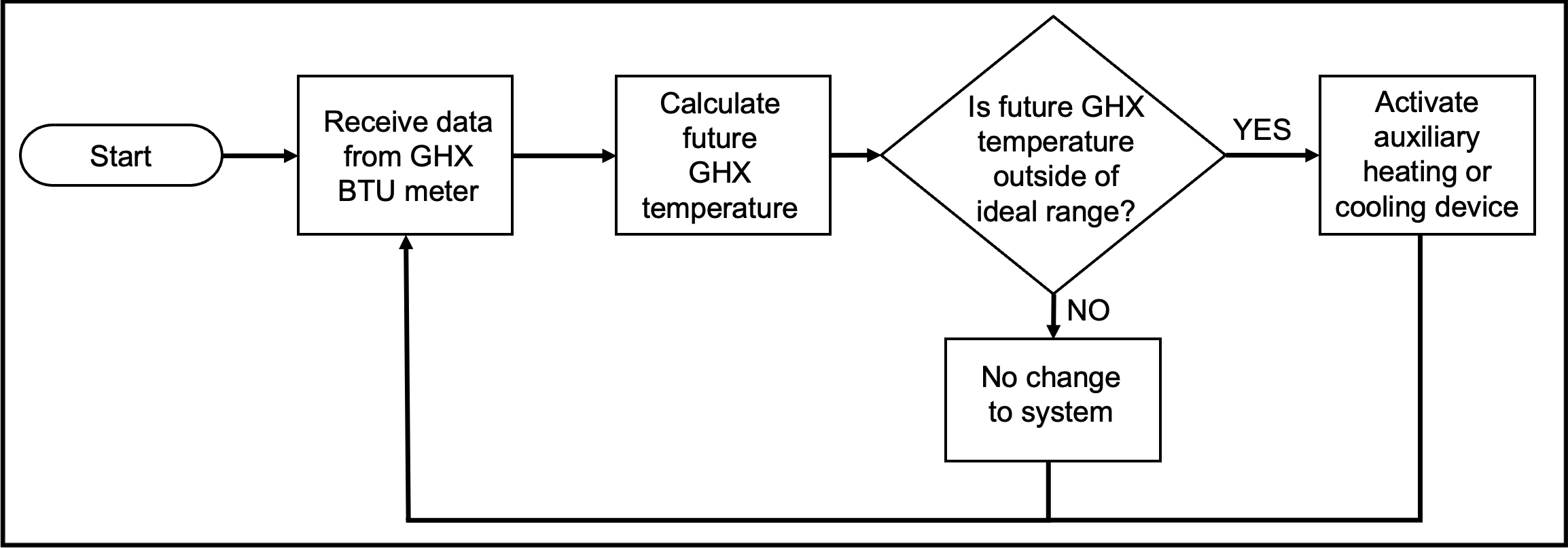
Lust: The Temptation to Oversize and Overpay
by GeoFease | Oct. 29, 2024, 7:44 a.m.
In Ground Source Heat Pump (GSHP) design, there’s a powerful temptation—let’s call it "Lust"—to create a system that meets 100% of a building’s heating and cooling needs. At first glance, this feels like the ultimate solution. Why not cover every last bit of demand, right? But in the world of GSHPs, this “more is better” mindset can lead to serious long-term consequences.
We once worked with a project where this temptation to oversize led to an unfortunate result. The system was set up to handle 100% of a building’s heating needs, year after year, in a cold climate with a heavy heating load. But without balancing, the Ground Heat Exchanger (GHX)—which absorbs and releases heat to the earth—had to work nonstop, pulling heat from the chilly ground without any downtime. At first, it managed fine, but over time, the GHX slowly cooled down season by season. Each winter pulled it a little colder, and by year 15, it hit a point where it could no longer sustain the building’s heating demand. The GHX, once a reliable energy source, was on the verge of freezing up entirely, all because of an unbalanced design that pushed it beyond its limits.
Balancing Act: How GSHP Systems Thrive
GSHP systems operate best when heating and cooling loads are balanced across the year. A well-balanced system lets the GHX maintain an ideal temperature range, typically between 30°F and 90°F. When you design GSHP systems to handle 100% of the demand in an unbalanced environment, like a heating-dominant climate, it’s like working a muscle constantly without rest. Just as muscles get sore and tired, the GHX becomes strained, leading to inefficiencies, operational issues, and, as we saw, a frozen, ineffective system over time.
An unbalanced load stresses the GHX, risking temperature extremes that strain or even halt operations. In severe cases, emergency shut-offs occur, leaving the building without heating or cooling right when it’s needed most. By balancing loads, GSHP systems thrive, keeping energy usage efficient and ensuring consistent, reliable performance over the years.
Finding Balance: Why Auxiliary Systems Matter
To keep GSHP systems balanced and prevent the slow “freezing” or "overheating" fate, auxiliary systems—backup heating or cooling sources—are vital. These allow the GHX to work at a manageable pace, preventing overload and keeping it within its ideal temperature range. Think of these auxiliary systems as giving your GSHP an extra hand throughout the year during favourable times, whether heating or cooling. This balance not only keeps the system running smoothly but also extends its lifespan, helping avoid costly replacements or repairs from gradual strain and wear.
Predictive Control: The Crystal Ball for GSHP Systems
Here’s where technology steps in to save the day. Some modern GSHP systems use predictive control, which is a bit like giving the system a crystal ball. Predictive control systems can analyze real-time data and anticipate when GHX temperatures are trending off course. When it spots a future imbalance, it can activate auxiliary systems to help stabilize the load. This way, the GHX doesn’t face the same fate as the freezing system we mentioned, and instead, it operates at optimal efficiency year-round.
Predictive control is a game-changer, especially for buildings with big differences in heating and cooling needs. It saves on energy costs, reduces wear and tear, and keeps the system performing smoothly without the need for expensive oversizing.

Example Predictive Control Algorithm
Design Smarter, Not Harder
Designing GSHP systems isn’t always about going all-in on a system that covers 100% of the load. Instead, it’s about playing it smart. By keeping the system balanced and using tools like auxiliary systems and predictive control, you create a setup that’s efficient, durable, and cost-effective.
Want to learn more about the common “sins” in GSHP design? Check out the other articles in our Seven Deadly Sins Series, where we dive into more pitfalls to avoid and tips to keep your GSHP system running at its best!